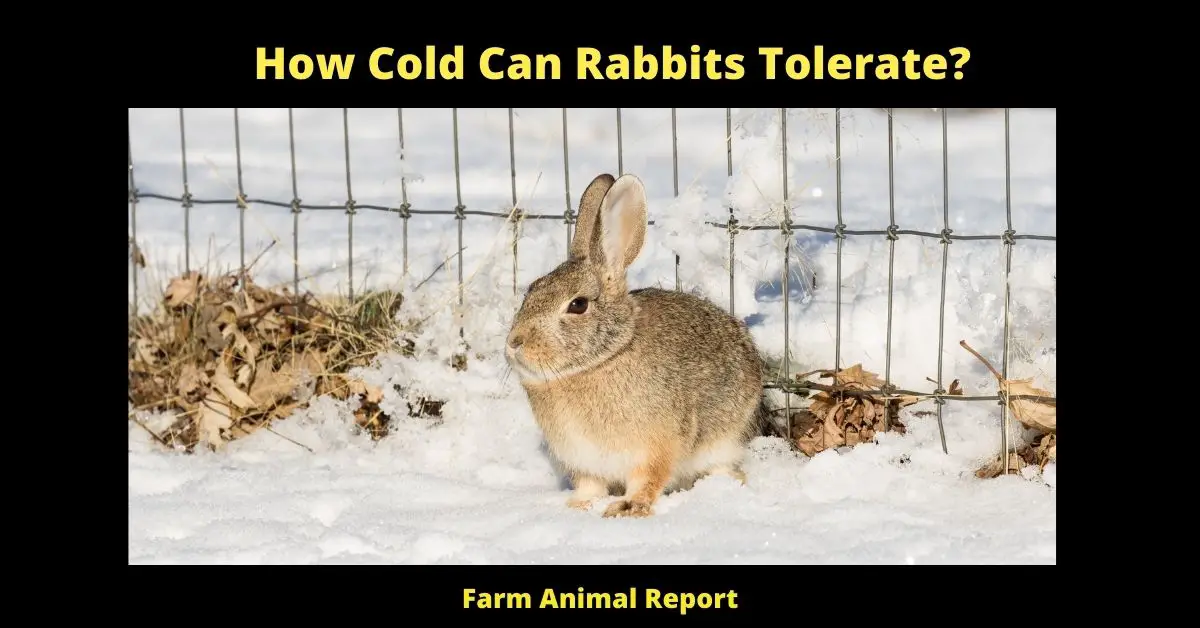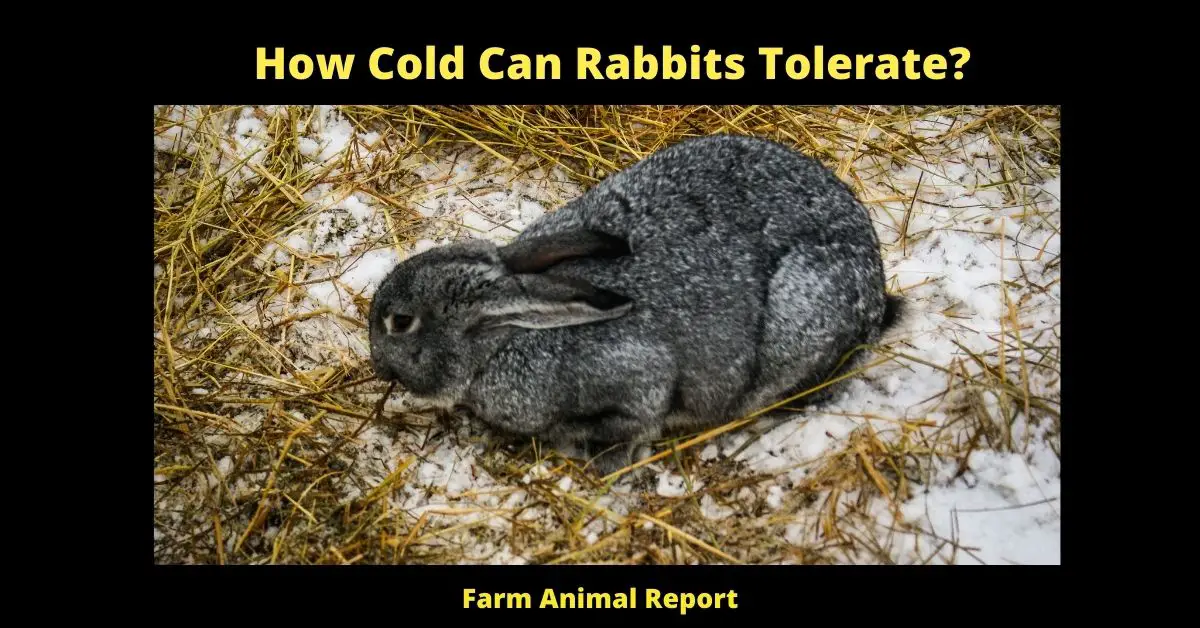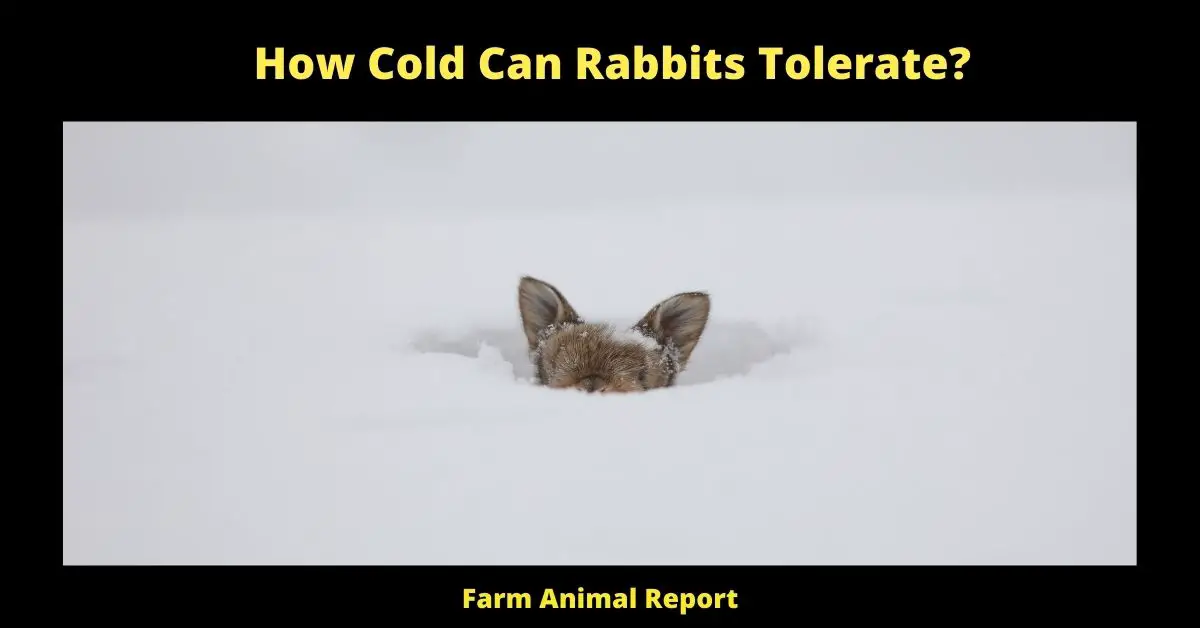How Cold can Bunnies Tolerate? Rabbits can tolerate temperatures as low as 40 degrees Fahrenheit and even lower if necessary with good Rabbit Husbandry Care! However, 20F may be too chilly so it’s important that rabbits never go out into below-freezing conditions without taking special precautions
How Cold Can Bunnies Tolerate?
Have You thought about taking your Bunny to Walmart to Buy Him GLOVES for Winter????
At What Temperature should I worry if My Rabbits are too Cold?
Here are 10 Simple Tips to Keep Your Rabbits Warm
Check Out Amazon for Resources about Breeding Rabbits
Prevention will keep your Bunny’s Snug when it gets cold. How Cold Can Bunnies Tolerate?
It’s wintertime and it’s so cold outside. But what about your pet rabbits? Are they all snug inside their house, or are they braving the snow in search of some food? If you’re worried about how cold your rabbit can tolerate, here are some tips on keeping them warm this winter! Jump to 18 Ways to Make Money by Rabbit Farming **CHARTS**
What is the Best Temperature range for Rabbits?
Rabbits are hearty animals they thrive in a temperature range of 40-80 degrees Fahrenheit. If the temperature falls below this range, your rabbit may become sluggish and refuse to eat or drink. If the temperature rises above this range, your rabbit may become uncomfortable and could develop heatstroke which can be fatal.
Make sure you provide a cool place for your bunny to escape the heat and plenty of fresh water. How Cold Can Rabbits Tolerate?
This is extremely important in cold weather if your rabbits do not get the water they need they can dehydrate and die. In hot weather, make sure to provide plenty of shady spots for your rabbit to rest and drink lots of water. You can also place a frozen bottle of water in their pen for them to lay next to.

How do Rabbits Regulate their Body Temperatures?
Rabbits Body Temperature is regulated by the hypothalamus in their brain. When it gets too hot, the hypothalamus will send a signal to the muscles to start sweating. The sweat will evaporate and cool the rabbit down. If it’s cold outside, the rabbit will shiver to produce heat.
Their fur also helps to keep them warm.
The body temperature of a rabbit is important because it affects how they digest their food. A rabbit’s body temperature needs to be around 100 F (38 degrees Celsius) for them to properly digest their food. If the temperature is too high or too low, the rabbit will not be able to digest their food and they will become sick.
What Temperature is too Cold for Rabbits?
Rabbits have nice insulated fur coats, but if temps dip too low, they can still get cold. In general, it is recommended that you keep your rabbits’ environment between 50-70 degrees Fahrenheit.
If the temperature falls below freezing, make sure to provide them with a warm place to sleep and plenty of food and water. You may also want to consider using a space heater to help keep them warm
Any Temps below Freezing You need to keep tabs on their food and water, making sure they have a constant supply of both. If the temperature dips below 20 degrees Fahrenheit, you should bring your rabbits inside. Make sure to provide them with a warm place to sleep and plenty of hay to keep them warm.
What s Best Winter Housing for Rabbits? Hutch
There are a few different options when it comes to winter housing for rabbits. One option is to keep them in their regular hutch or cage, and provide extra bedding and insulation. Another option is to create an outdoor shelter for them. And finally, you could bring your rabbit inside your home.
See Amazons Resources for Looking at Available Rabbit Hutches
Each of these options has its own set of pros and cons. Keeping your rabbit in its regular hutch or cage is the most affordable option, but it can be a bit cold for them during the winter months.
An outdoor shelter can provide some extra warmth, but it can also be expensive to build and may not be as safe as you would like. Bringing your rabbit inside your home is the most expensive option, but it also keeps your rabbit warm and safe from the elements.
Ultimately, the best winter housing for rabbits depends on your own personal circumstances. Consider what will be the most affordable and comfortable for your bunny. And whatever you do, make sure to provide plenty of extra bedding and insulation to keep them warm.
Outside Cages – 5 Tips for Outside Hutches
If you have an outdoor hutch for your rabbit, there are a few things you need to do to make sure he stays warm and safe during the winter months.
- Add extra bedding to the hutch. Hay or straw works well, as do fleece liners. Make sure to keep the bedding topped up, as rabbits will burrow down into it to keep warm.
- Insulate the hutch. If you can, add some insulation material to the walls of the hutch. This will help keep out the cold air and keep your rabbit warm.
- Provide a windbreak. If your hutch is in an exposed area, make sure to provide a windbreak to help protect your rabbit from the cold winds. A simple fence or row of bushes will work well.
- Monitor the temperature. Rabbits can tolerate colder temperatures than many other animals, but you still need to make sure that the hutch is not too cold for them. The ideal temperature range is around 45-70
- Waterproof Roofing – Keeping your Rabbits dry
What Kind of Winter Nutrition is needed for (Pet)Rabbits?
It is very helpful in winter to adjust your bunny’s feed to make sure they are getting the right kind of nutrition. One way to do this is to add a little bit of oil to their diet. This will help keep them warm and healthy!
Dry Feed – In the winter, you may want to increase your bunny’s dry feed. This will help them stay warm and give them more energy. You can also give your bunny some hay in the winter to help keep them warm. Some good types of hay to give in the winter are Timothy Hay and Alfalfa Hay.
Fresh Vegetables – You should also continue to give your bunny fresh vegetables in the winter. Some good vegetables to give in the winter are carrots, kale, and parsley. These vegetables will help keep your bunny healthy and warm.
Water – Make sure your bunny has plenty of fresh water in the winter! This is very important, especially because they will be eating more dry feed
Here are 10 tips to keep your Rabbit From Getting too Cold:
- Prevent Drafts
- Insulate Hutch
- Waterproof Roof
- Access to Fresh Water
- Increase hay for insulation
- Change to a winter diet
- Clean cages from wet Urine more often
- Move rabbits to a warm area, House, Garage, Barn
- Add electric heating pad to Hutch
- Monitor Temperature and Humidity Levels in Hutches
- Colonies – Raising your rabbits in underground warrens allow them to go into their burrows to stay warm or cool
Symptoms of your Rabbit is Getting Too Cold?
One way that you can tell if a rabbit is sick is:
- Lethargic
- Shivering
- Shaking
- Huddling
- Stiff
- Panting
Remedies if Your rabbit is too Cold?
- Using a heating pad
- Wrap them in a blanket
- Put them near a heat source
- Make sure their shelter is warm
- If your rabbit is exhibiting any of these symptoms, it might be getting too cold and you should take steps to warm

What Temperature is too Cold for Baby Rabbits?
You need to take extra care if a doe is giving birth in cold weather. Make sure the nest is in a warm place and that the baby rabbits are well-insulated. A temperature of about 50 degrees Fahrenheit is ideal for keeping baby rabbits warm. If it gets much colder than that, you may need to bring them inside to keep them from freezing.
If you live in a cold climate, be prepared to take extra care of your baby rabbits during the winter. Make sure their nest is in a warm place, and keep an eye on the temperature to make sure it doesn’t drop too low.
A temperature of about 50 degrees Fahrenheit is ideal for keeping baby rabbits warm. If it gets much colder than that, you may need to bring them inside to keep
In nature, the Babies would e in an underground nest – temps probably around 50 Degrees. In a Fur-lined nest, nuzzling on momma.
Always provide nesting Boxes if you are breeding
Final Thoughts – What Temperature is too Cold for Rabbits?
In Summary, while there is a lower limit to the temperature that is safe for rabbits, it is usually okay to keep them in an environment that falls within the range of 50-70 degrees Fahrenheit. If the temperature drops below this or if you live in a colder climate, be sure to take extra precautions to keep your bunnies warm.
Adults any temp drop lower than freezing, and severe weather keep tabs on them.





